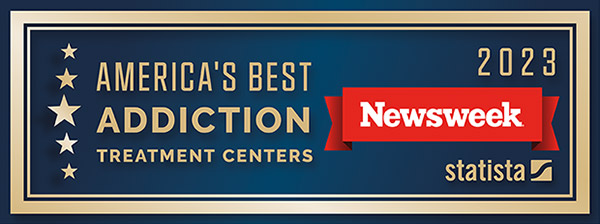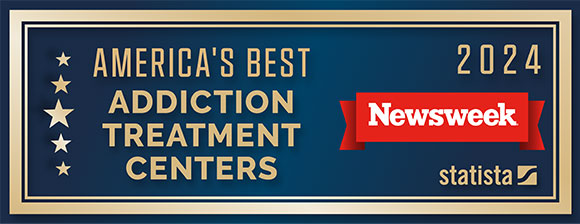Ashton Method for Benzodiazepine Withdrawal Treatment
Oro House uses The Ashton Method for Benzodiazepine Withdrawal Treatment in Malibu and Los Angeles, California because it is the safest and most effective form of benzo detox treatment.
Oro House uses The Ashton Method for Benzodiazepine Withdrawal Treatment in Malibu and Los Angeles, California because it is the safest and most effective form of benzo detox treatment.
Benzodiazepines first appeared on the market in the 1960s. At that time they were considered an important new approach of treatment for many patients.
It was later revealed that benzos caused a wide range of side effects for a lot of people who developed a tolerance to the drugs and they found it difficult to quit using them.
Each person has a different reaction to benzodiazepines and they are helpful for some people when taken for a short time.
Unfortunately, many others have struggled with a variety of physical and psychological side effects when taking them, and especially when trying to quit using them.


Benzodiazepine withdrawal, addiction, and dependence are all common conditions linked to prescription benzos, as well as those who use them without being prescribed by a doctor.
Because of the harmful benzodiazepine withdrawal symptoms, it’s necessary for many patients to seek professional help when trying to quit using them.
Doctors and patients should both be aware that attempting detox from benzodiazepines without proper medical supervision can be extremely dangerous or even fatal. This isn’t the case for everyone, but it is for many people.
This is why Oro House uses The Ashton Method for Benzodiazepine Withdrawal Treatment for safe and comfortable benzo detox for our clients.
Benzodiazepines, often referred to as simply “benzos,” are a psychoactive class of drugs that serve as a central nervous system depressant. Because they cause relaxation and drowsiness, doctors often prescribe them for treating anxiety or insomnia. They are also used as muscle relaxers, anticonvulsants, and for a number of other conditions.
The basic benzodiazepine mechanism of action is to enhance the effect of the neurotransmitter GABA in the central nervous system. GABA is known as an inhibitive neurotransmitter, which means it suppresses overly active nerves in the brain and the body’s central nervous system. When used properly for a short time, they can relieve some types of physical and mental health conditions.
Because of the way benzos interact with the brain’s GABA receptors, they can be an effective way to relieve anxiety, insomnia, depression, nausea, seizures, alcohol withdrawal symptoms, and a number of other conditions.
For some patients, this can be quite helpful, but it’s necessary to recognize that prolonged use of benzos can be dangerous.
Even though all benzodiazepines belong to the same class of medication, not all of them work in the same manner. Some of the different behaviors are related to how quickly they start working or how long they last. The differing onset times and half-life are why some benzos work well for treating anxiety, and others are better suited for sleep disorder treatment.
Chlordiazepoxide (Librium) was the first benzodiazepine available to the public in 1960. This was followed by Diazepam (Valium) a few years later. By the late 1970s, benzodiazepines were prescribed more than any other medication worldwide.
Benzodiazepines are sometimes known as the “z” drugs and they are similar to other drugs such as as sedatives or hypnotics, like Zolpidem (Ambien), Eszopiclone (Lunesta), and Zaleplon (Sonata).
The generic name for each type of benzodiazepine below is listed first and the brand name follows in (parentheses).
Sometimes benzodiazepines are used interchangeably, so doctors and patients should understand the timing of onset and length of duration, because these can vary among different prescriptions.
Diazepam (Valium) onset starts working very quickly, usually within 30 to 60 minutes, and the duration lasts anywhere from 1 to 3 days. On the other hand, Clonazepam (Klonopin) has the same effective duration, yet it takes longer to begin working. Triazolam (Halcion) is known to have a short onset, but it only lasts for 3 to 8 hours.
The differences between onset and duration, combined with the mechanism of each medication, account for why some types of benzos are used for anxiety, yet others are prescribed for insomnia or seizures. Chlordiazepoxide (Librium) is used primarily for treating alcohol withdrawal.

Call us at (888) 595-0235 or use the form below

Many of the side effects of benzodiazepines are associated with the calming, sedative mechanism of the drugs. Each type of benzo may cause different side effects, and each individual will react in a unique manner.
The most common benzodiazepine side effects include:
Less common side effects of benzodiazepines are:
Some of the side effects mimic the symptoms the drugs are intended to treat, and these are known as paradoxical effects or reactions.
An example of a paradoxical effect occurs when a patient is taking the drug as a treatment for anxiety and he or she paradoxically experiences an increased level of anxiety because of the medication.
In addition to the commonly known side effects, benzodiazepines can also have adverse drug reactions or interactions with other substances, like alcohol or other sedatives. Doctors should let their patients know which drugs may cause a negative interaction when taken together.
It’s unfortunate that more doctors don’t know how to increase GABA naturally instead of prescribing benzos for their patients, especially when considering the horrific experiences some people may have when they attempt to stop using them.
Benzodiazepine use began to peak sometime in the late 1970s. After receiving a considerable amount of bad press, benzo use declined for a short time. Some of the bad press appeared in women’s magazines because the medication was primarily marketed to women. As soon as the new drug Xanax was introduced to the market, prescriptions for it increased along with usage.
Since the beginning of the Covid pandemic, there has been a 40 percent increase in benzodiazepine prescriptions. We consider this America’s sleeping giant – a problem we don’t even know we have yet – nor do we realize how widespread it is.
The FDA is becoming concerned and recently added a new warning label on these drugs that explains they have a huge potential for misuse and addiction.
Far too often, doctors who don’t have a full understanding of the mechanism of action and dependence or withdrawal potential of benzos, hand them out like candy. This creates a prescription for disaster that may soon become as problematic as the opioid epidemic.
Benzodiazepines are generally safe and effective when they are used as directed for a short time, which is usually between 2 to 4 weeks.
When they are used for longer periods of 5 weeks to 3 months or more, they can potentially cause serious dependence problems and changes to the structure and function of the patient’s central nervous system.
Even if a person is not technically “addicted” to them, the physical dependence caused by benzo use may look very similar to substance abuse. It’s extremely easy to develop a tolerance and physical dependence, where the withdrawal symptoms mirror those of addiction. It is essential for doctors and patients to understand this when considering benzodiazepine prescriptions.
If a person develops a tolerance to benzos, his or her doctor may increase the dosage so they experience the same effects of the original prescription. This can become very dangerous when someone does this on their own without consulting their doctor first. Extreme side effects may appear, or even a fatal overdose is possible if they are mixed with other substances like alcohol or opioids.
Some people will try to quit using benzos cold turkey, and this may send them spiraling into dangerous, and potentially fatal withdrawal symptoms or seizures.
Even people who continue taking benzodiazepines as prescribed can experience what is referred to as “interdose withdrawal symptoms,” which can appear at some point before it’s time to take the next scheduled dose.
Benzodiazepine withdrawal in any form can be dangerous or even fatal if not treated immediately. Many doctors who prescribe benzodiazepines do not have the proper medical training to handle benzo withdrawal, so it’s vitally important to seek professional help from an addiction and detox specialist.
Olo House has experienced medical detox professionals who are properly trained in safe and proper benzo withdrawal protocols, and we use The Ashton Method for Benzodiazepine Withdrawal.
Oro House uses The Ashton Method for Benzodiazepine Withdrawal for safe and comfortable detox

As previously mentioned, benzodiazepines enhance the effect of GABA in the central nervous system.
GABA is found in approximately 40 percent of the body and is considered an inhibitory neurotransmitter, which means it naturally produces a calming effect. This is why it relieves stress and anxiety, and helps people to overcome insomnia.
The basic mechanism of action for benzos is to “down-regulate” GABA receptors in the brain, which is another way of saying it reduces the number of GABA receptors and discards them. This effect can potentially alter gene expression in the brain.
Long-term use of benzodiazepines causes the down-regulation of the brain’s GABA receptors to put the “brakes on” the central nervous system. With the flood of synthetic GABA produced by benzos, the brain will prune these receptors to create a balance.
This also creates a problem, because whenever someone tries to stop taking these drugs without having any natural “brakes,” every little problem that arises can seem like an impossible task to deal with.
Anxiety levels tend to go through the roof, loss of sleep will occur, and it’s common to experience physical symptoms like hearing buzzing and “popping” sounds. Many people have said they felt like they were dying.
These horrible physical and mental side effects have been known to last a long time for some people. Benzos may help some individuals for a very short time. But using these drugs for more than a few short weeks may result in functional changes to the brain. These types of changes don’t simply return to normal when the drug usage has stopped and it is eliminated from the body.
Through a process called “up-regulation,” the brain literally needs to grow new GABA receptors to compensate. After withdrawal has been fully completed, the receptors in the brain should slowly return to their previous state. But it takes time for this to happen.
Benzodiazepine withdrawal can leave the brain in a very excitable state, and it’s possible some people might suffer with more stress or anxiety than before they started using the drugs.
This may also explain why some people actually experience an increase in stress or anxiety when taking this class of drugs, as their tolerance increases.
Even worse, some individuals return to normal for a short time after withdrawal treatment, only to rebound later and experience negative side effects and withdrawal symptoms again months or years later due to alterations to their GABA receptors and neurons.
A stressful event can induce an emotional state that the brain is not capable of fully handling because of theses changes to the GABA receptors.
Benzo withdrawal can be a very frightening ordeal, requiring professional treatment. Most doctors don’t have the proper experience or training to understand how any of this works, so it becomes necessary to seek the help of a qualified benzodiazepine treatment center.
Dr. Heather Ashton was a British psychopharmacologist who dedicated her life to working with patients addicted to benzodiazepines.
In 1999, Dr. Ashton published the book, “Benzodiazepines: How They Work And How To Withdraw.” It is now simply known as, “The Ashton Manual.”
After founding her benzodiazepine clinic in 1982, she followed over 300 patients who were addicted to benzodiazepines and collected data for more than 12 years as research for her treatment method.
Dr. Ashton’s work is now known as, “The Ashton Method, which is arguably the safest and most effective treatment for benzodiazepine withdrawal available today.
The Ashton Method recognizes that the only way to avoid the severe benzo withdrawal symptoms of physical and mental health problems and cognitive impairments, is to slowly taper the dosage over time.
At Oro House Recovery Centers, we use an individualized approach for all of our clients in addiction treatment. This approach is especially important for dealing with benzodiazepine withdrawal symptoms, since each person’s experience will be unique.
Every person will experience his or her own set of withdrawal symptoms that are directly related to their individual brain chemistry, combined with the type, quantity, and duration of medication used. All of these variables must be taken into consideration for treatment to be successful.
An individualized approach is the only way to safely and effectively taper off of benzos, and to avoid any negative physical symptoms of dependence, and the psychological effects of anxiety, depression, and cognitive damage.
Oro House is proud to provide our clients with the benefits of The Ashton Method, which we strongly believe is the most effective way for treating benzodiazepine withdrawal, addiction, and dependence.
This is a proven method of recovery and relapse prevention for anyone who has become trapped in the dangerous cycle of benzo dependence and addiction.